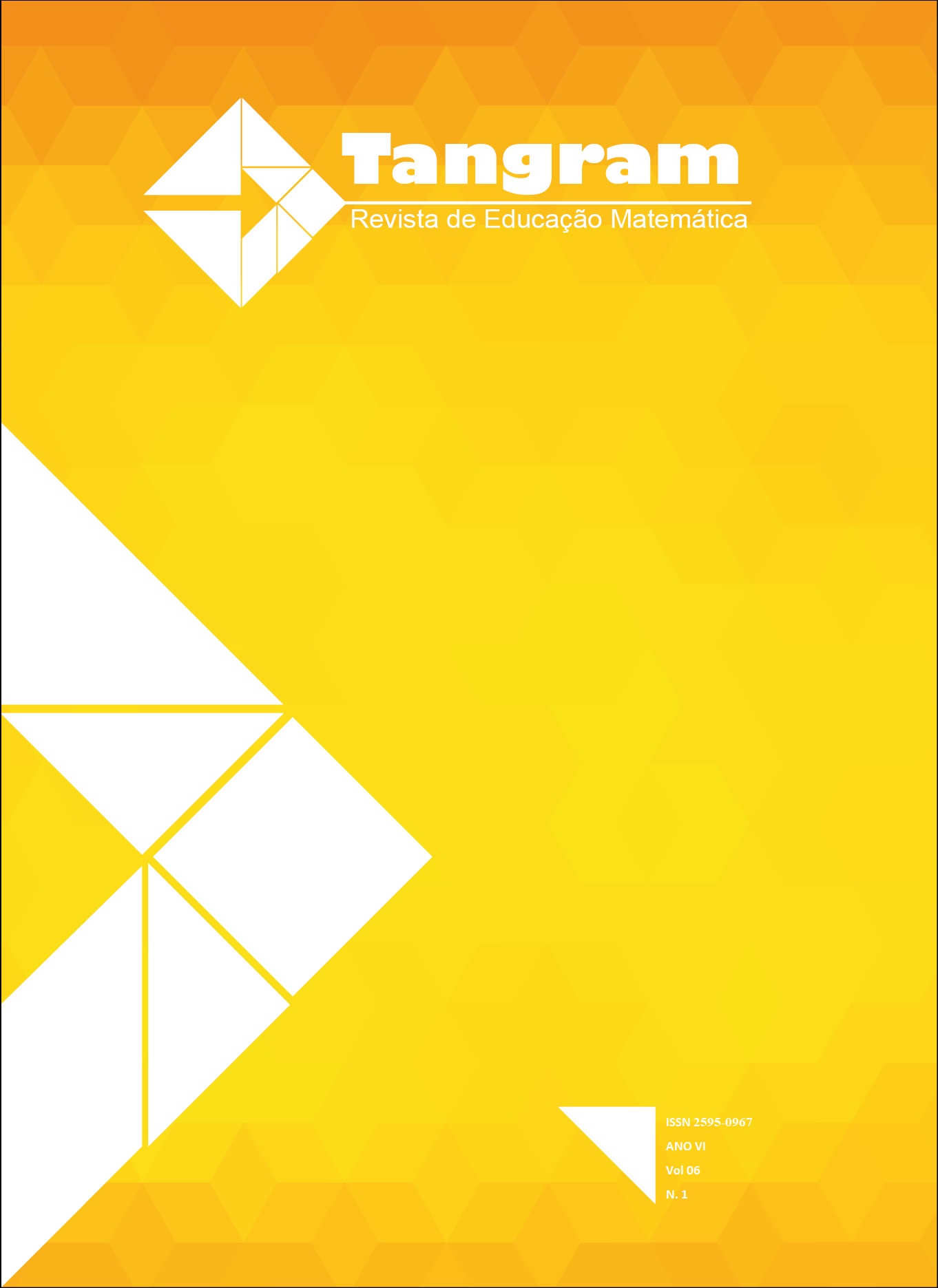Pensamento Financeiro e Letramento Estatístico: teorizações iniciais, desafios e possibilidades
DOI:
https://doi.org/10.30612/tangram.v6i1.16819Keywords:
Pensamento Financeiro Multidimensional., Letramento Financeiro., Letramento Estatístico., Cenários de Investigação., Estatística Cívica.Abstract
This article presents reflections on the development of thought and financial and statistical literacy, contemplating demands of the National Common Curricular Base (BNCC). This is an exploratory qualitative research that seeks, through creative didactic proposals that explore active teaching and learning methodologies, to offer didactic alternatives for the promotion of Financial Education and Statistical Education in Brazilian Basic Education. The theoretical framework that supports our research is constituted by the perspective of developing financial thinking through research scenarios, in the conception of Ole Skovsmose, and statistical literacy supported by civic statistics, according to Iddo Gal. In the end, we believe we have achieved our objective by offering the mathematics teacher didactic alternatives for the development of criticality and student investigative autonomy, prescribed in the BNCC, in the field of the contemporary transversal theme Financial Education and the thematic unit Probability and Statistics.
Downloads
References
Araújo, R. M. B. (2009). Alfabetização econômica: compromisso social na educação das crianças. São Bernardo do Campo: Universidade Metodista SP.
Barroso, D. F. (2013). Uma proposta de curso de serviço para a disciplina Matemática Financeira mediada pela produção de significados dos estudantes de Administração. Dissertação de Mestrado Profissional em Educação Matemática. Juiz de Fora: UFJF.
Bauman, Z. (2008). Vida para consumo: a transformação de pessoas para produtos. Rio de Janeiro: Jorge Zahar Editora.
Brasil. (2018). Base Nacional Comum Curricular. Brasília: Ministério da Educação.
Carraher, T. N.; Carraher, D. W.; Schliemann, A. D. (1982). Na vida, dez; na escola, zero. Cadernos de Pesquisa, 42, 79-86.
Cobb, G. W., & Moore, D. S. (1997). Mathematics, statistics, and teaching. The American mathematical monthly, 104(9), 801-823.
Coutinho, C. Q. S.; Teixeira, J. (2015). Letramento Financeiro: um diagnóstico de saberes docentes. REVEMAT, 10 (2), 1-22.
Coutinho, C. Q. S.; Souza, F. S. (2015). Potencialidades do Uso do GeoGebra e do R na Construção e Interpretação de Gráficos Estatísticos. In: Educação Estatística: ações e estratégias pedagógicas no ensino básico e superior. Suzi Samá; Mauren Porciúncula (organizadoras). Curitiba: CRV.
Denegri, M. C. (2004). Introduccion a la Psicologia Economica. Psicom Editores.
Engel, J. (2019). Cultura estadística y sociedad. Actas del Tercer Congreso Internacional Virtual de Educación Estadística, 1-18. Granada: Grupo FQM-126.
Engel, J.; Ridgway, J.; Stein, F. W. (2021). Educación Estadística, Democracia y Empoderamiento de los Ciudadanos. Paradigma, 42, 1-31.
Freire, P. (2005). Pedagogia da autonomia. Rio de Janeiro: Paz e Terra
Gal, I. (2002). Adults' statistical literacy: Meanings, components, responsibilities. International Statistical Review, 70(1), 1-25.
Gardner, H. (1993). Multiple intelligences. New York: Basic Books.
Gould, R. (2017). Data literacy is statistical literacy. Statistics Education Research Journal, 16(1), 22-25.
Hartmann, A. L. B.; Rangel, A. C. F., Malheiros, A. P. S. (2021). Educação Financeira Escolar e Modelagem Matemática: uma proposta de discussão para a Educação Básica. INTERMATHS, 2(1), 106-120.
Kistemann Jr, M. A. (2011). Sobre a produção de significados e a tomada de decisão de indivíduos-consumidores. 2011. Tese (Doutorado). Rio Claro: UNESP.
Kistemann Jr, M. A.; Castilho, C. R. (2018). Uma experiência com a Ética e Ed. Financeira no projeto PIBIC/CNPQ/UFJF. RPEM, 7(13), 355-371.
Llosa, M. V. (2013). A civilização do espetáculo: uma radiografia do nosso tempo e da nossa cultura. Rio de Janeiro: Objetiva.
Luria, A. (1976). El cérebro em acción. Barcelona: Fontanella.
Macedo, L. S. R. D.; Silveira, A. D. C. D. (2012). Self: um conceito em desenvolvimento. Paidéia, 22, 281-290.
Nicholson, J.; Gal, I.; Ridgway, J. (2018). Understanding Civic Statistics: A Conceptual Framework and its Educational Applications. A product of the ProCivicStat Project.
Skovsmose, O. (2000). Cenários para investigação. Bolema. 13 (14), 66-91.
Vygotsky, L. S. (2008). Pensamento e linguagem. São Paulo: Martins Fontes.
Downloads
Published
How to Cite
Issue
Section
License

This work is licensed under a Creative Commons Attribution-NonCommercial-ShareAlike 3.0 Unported License.
Authors must accept the publication rules when submitting the journal, as well as agree to the following terms:
(a) The Editorial Board reserves the right to make changes to the Portuguese language in the originals to maintain the cultured standard of the language, while respecting the style of the authors.
(b) Authors retain the copyright and grant the journal the right to first publication, with the work simultaneously licensed under the Attribution-NonCommercial-ShareAlike 3.0 Brazil (CC BY-NC-SA 3.0 BR) that allows: Share - copy and redistribute the material in any medium or format and Adapt - remix, transform, and create from the material. CC BY-NC-SA 3.0 BR considers the following terms:
- Attribution - You must give the appropriate credit, provide a link to the license and indicate whether changes have been made. You must do so under any reasonable circumstances, but in no way that would suggest that the licensor supports you or your use.
- NonCommercial - You may not use the material for commercial purposes.
- Sharing - If you remix, transform, or create from material, you must distribute your contributions under the same license as the original.
- No additional restrictions - You may not apply legal terms or technological measures that legally restrict others from doing anything that the license permits.
(c) After publication, authors are allowed and encouraged to publish and distribute their work online - in institutional repositories, personal page, social network or other scientific dissemination sites, as long as the publication is not for commercial purposes.






